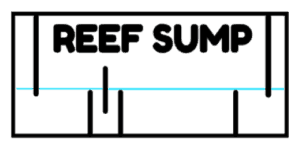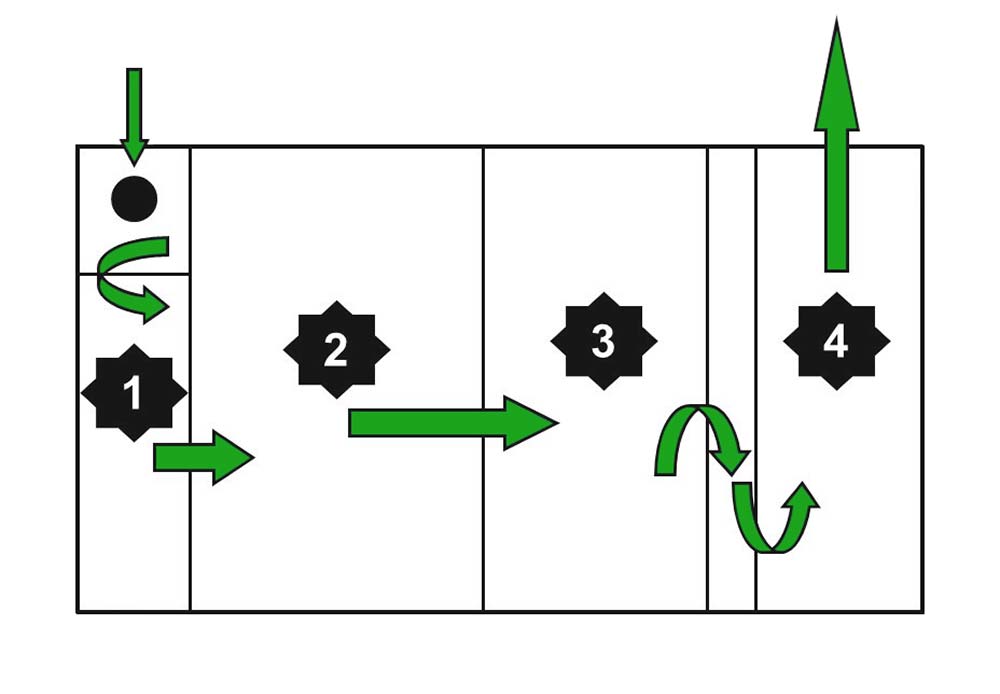
A typical modern-day saltwater aquarium sump will be separated into various chambers that each have their specific purpose in supporting life in the display tank. Two common chambers that you’ll find in most saltwater aquarium sumps are a chamber for a protein skimmer and a chamber for a refugium. These are usually the two largest chambers in a sump and if your chosen protein skimmer can fit into either chamber, it begs to question, what goes first in the sump the refugium or protein skimmer?
In most common saltwater aquarium setups the protein skimmer will come first before the refugium. In many saltwater aquarium sumps, the largest chamber is the second chamber and a protein skimmers though varied in size will only fit in the second chamber before the refugium.
With that said, if your protein skimmer fits in either the second or third chamber you do have a choice as to where to put it. In my 210-gallon mixed reef tank, I have a large Trigger Systems Emerald 39 sump that has large 2nd and 3rd chambers that either fit my large Reef Octopus Classic 202-S skimmer. I choose to put the refugium before my skimmer. There are advantages and disadvantages for both and in this article, we’ll explore some of the considerations of putting the refugium or protein skimmer first in the sump.

What are the chambers of a Saltwater Sump?

A basic saltwater sump with a refugium consists of 4 chambers the drain/mechanical filtration chamber, the refugium chamber, the protein skimmer chamber, and the return chamber. There can also be bubble traps between the chambers which force water up and down through the sump to help prevent micro bubbles from entering the display tank.
How to Keep Micro Bubbles From Entering Your Display Aquarium
The first chamber is the drain and mechanical filtration chamber. Water gets drained into the sump from the display tank in this chamber. In many sumps, filter socks are used in this chamber to catch any large organic waste before it moves through the rest of the sump. In my Trigger Systems Emerald 39 sump, water drains into the sump via two PVC pipes below the water level to control drain noise. The water then overflows into another section containing three filter socks before moving into the second section.
The second and third section is usually the sections where it is up to you to decide what to place first the refugium or protein skimmer. In my Trigger Systems Emerald 39 sump, I have my refugium in the second section. I love having a refugium in my systems. I use the refugium section to grow the macroalgae Chaetomorpha or Chaeto for short and to house microfauna like Copepods in it.
Growing macro algae like Chaeto is a natural way to effectively reduce harmful nitrate and phosphate levels in your tank. Growing macro algae in the sump require light. Currently, I have an Aqua Illumination Prime 16 Fuge led light lighting up my refugium and grows Chaeto like crazy. Having a safe secure spot for microfauna like copepods also has many benefits to your tank including increasing biodiversity and a renewable food source for fish and corals.
AlgaeBarn Live Copepods & Phytoplankton Combo Pack Tisbe & Tigriopus Pods + Live Phytoplankon
POSEIDON’S FEAST LIVE COPEPODS: Imagine having a sustainable & diverse copepod population in your marine aquarium. Poseidon’s Feast contains 3000+ Premium LIVE Tigriopus and Tisbe Copepods ranging from nauplii to adult sizes.
What are the Best Substrates to Use for a Refugium?
In my sump, the third chamber holds my protein skimmer, a Reef Octopus Classic 202-S skimmer. This is a large skimmer and barely fits in the third chamber of my sump. Protein skimmers are designed to create microbubbles within its body to force dissolved organic waste up and out of the water column into a collection cup that can be disposed of. Protein skimmers are one of the most efficient pieces of equipment in a reef system in removing waste and keeping water parameters in check.
How to Break in a Protein Skimmer
The last section is the return section. In this section, a return pump will reside. Processed water has moved through all the chambers of the sump and the return pump will deliver it back to the display tank. In my sump, I’m currently running an Ecotech Marine Vectra L2 pump.
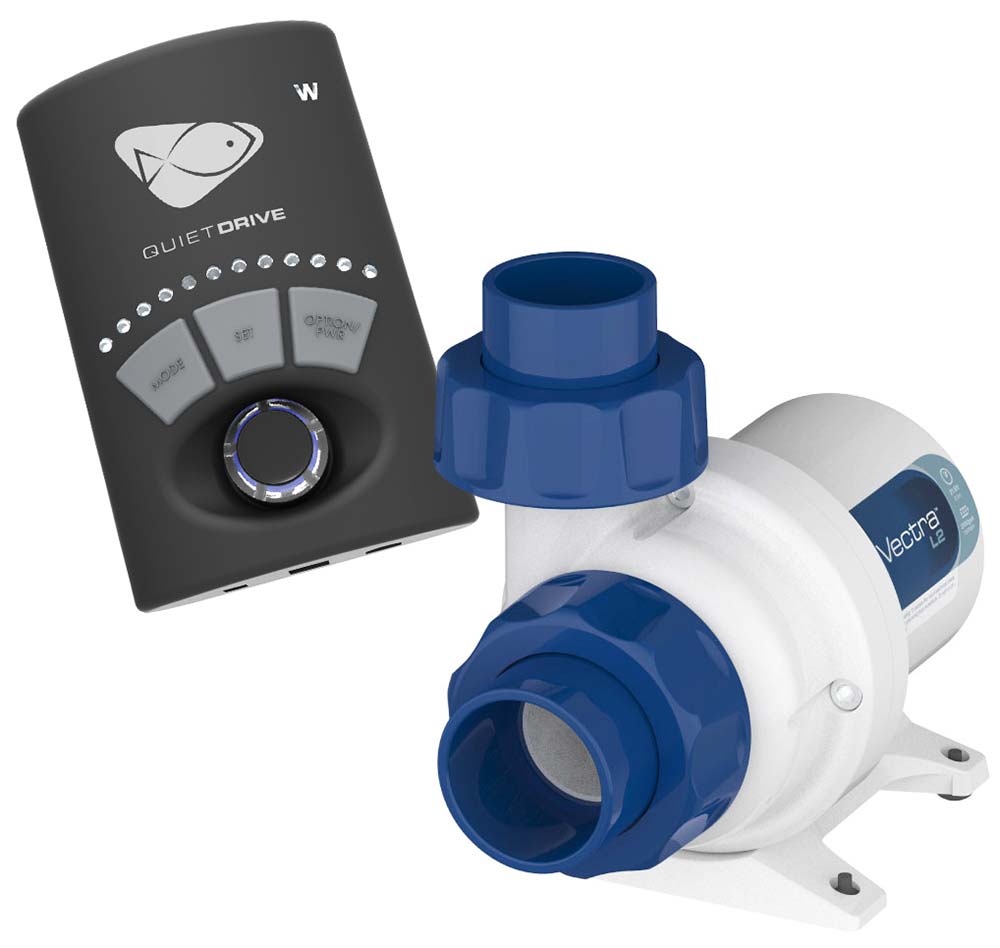
Ecotech Marine L2 Vectra Mobius Version Mobius Ready DC Return Pump (3100 GPH)
MOBIUS READY – BLACK CONTROLLER Specifications Max Flow: 3100 GPH Max Head Height: 21.5 Feet Footprint: 5″ L x 8.5″ W Input Fitting*: 1.5″ (38mm) Output Fitting*: 1.25″ (31.75mm) Power Supply: 150W *Input and output fitting are compatible with standard PVC pipe.
Upgrading to the Echo Tech Marine Vectra L2 and Plumbing to 3/4” Return Lines
Goals of a Refugium
The first is to grow macroalgae like Chaeto within the refugium to reduce nitrates and phosphates. Chaeto is a plant and requires light and a food source or fertilizer to grow. In the case of Chaeto, its food source comes in the form of phosphates and nitrates which are products of waste in the aquarium.
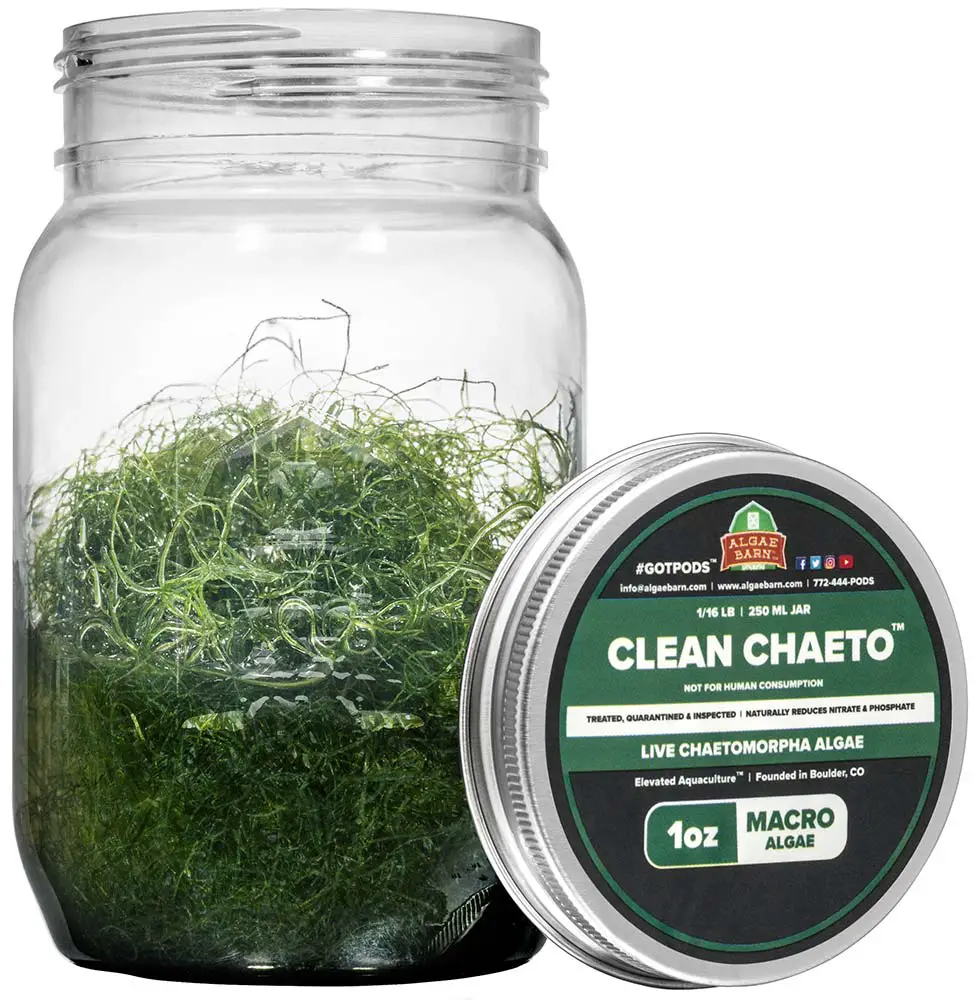
The second goal is to provide a refuge for microfaunae like copepods and amphipods. This refuge keeps microfauna safe from predators and offers a place for them to reproduce. A healthy population of copepods can serve as an important part of the cleanup crew in your tank and a renewable food source for some fish and coral. In particular, it can be hard to keep a Mandarin Goby without a healthy copepod population.
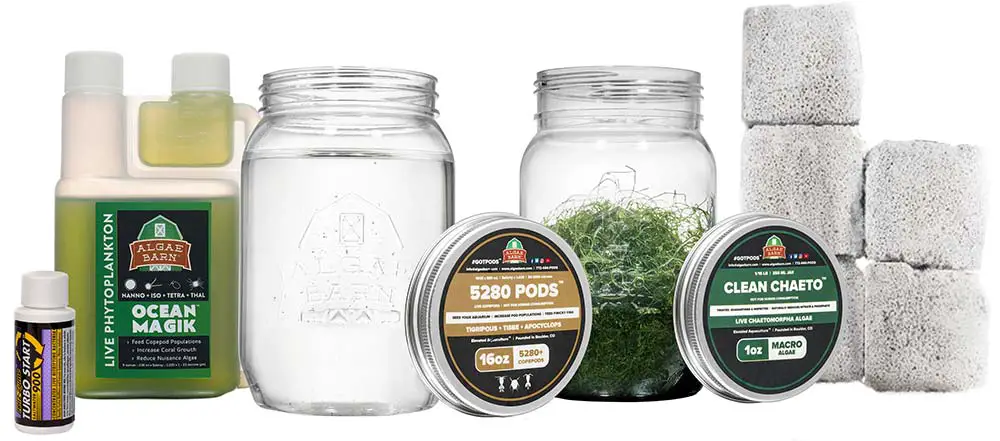
Goals of a Protein Skimmer
The main goal of a protein skimmer is to directly export waste from the system’s water column. Protein skimmers do this by drawing water into the skimmer body via a pump. These special pumps are designed to mix air and water to create thousands of microbubbles within the body of the skimmer.
As the bubbles get forced to the top of the skimmer body, dissolved organic waste attaches to the surface area of the bubbles. As this process continues the organic waste continues to be pushed up into a collection cup which is then emptied directly removing waste from the system.
Advantages to Having the Protein Skimmer Before the Refugium
- The second sump chamber is often the largest. Having a larger chamber will allow you to get a bigger skimmer which usually equates to higher performance. Having a larger chamber also helps with servicing the skimmer. I have to admit that my skimmer barely fits in the third chamber and maintenance can be difficult when the whole thing needs to be cleaned.
- Copepods and other microfauna can be killed by your protein skimmer before they make it to the display tank. With the refugium following the protein skimmer, the flow will dictate a probability that more pods will bypass the skimmer and move into the tank via the return.
Can a Protein Skimmer Kill Copepods?
- There is less of a chance for microbubbles from the skimmer to make their way into the display tank. Sometimes a protein skimmer will create microbubbles that can be unsightly if they make it to the display tank. With the skimmer in the second chamber, there are more opportunities for the bubbles to disperse before reaching the return outlets.
- With the refugium before the skimmer, there is a chance that your macro algae might flow through to the skimmer, get sucked up, and potentially clog the skimmer.
- Chaeto is very stringy and it grows together in large clumps or balls. The Chaeto structure can act as a filter and trap larger pieces of organic waste. This isn’t too much of a problem, but it can cause your Chaeto to look dirty and cause it to die off.
Advantages to Having the Refugium Before the Protein Skimmer
- If your 2nd chamber is larger than the third you can grow a larger Chaeto ball. A healthy large Chaeto ball will do an excellent job stripping the water of nitrates and phosphates. Optimal nitrates and phosphates will reduce the need for chemical filtration and frequent water changes. Chaeto is an algae and if you can grow it in a contained area it helps keep other algae out the display tank as it out-competes for light and nutrients.
- The refugium and macroalgae get the first crack at processing dirty water.
- There is the potential for a protein skimmer to strip nutrients that the Chaeto could use in its growing process before it reaches the Chaeto.
Reefsumpers recommendation on Putting the Refugium or Protein Skimmer First
On the surface, it looks like there are far more benefits to having the protein skimmer before the refugium. Though there are a greater number of advantages with the skimmer first, I believe these advantages to be minimal if any in impact to the overall system.
Some Copepods will not make it through the skimmer, but many will survive and in the right conditions will thrive in your fuge, make it up to the display, and inhabit the live rock in the tank. If you can have both a skimmer and a refugium you’re going to be in good shape. Both components of the sump are redundant if not complimentary of each other and both will put you on a path for a high probability of a successful reef tank.
Making the final choice on what to put first will come down to what you are looking to optimize in terms of goals in having a protein skimmer and a refugium. For me, I choose to place the refugium first because in my sump it is much larger than the third chamber and my protein skimmer still fits in the third chamber.
I prioritized having the space to grow a large Chaeto structure. Having a large Chaeto structure has helped keep my parameters in check while providing me the opportunity to supply and trade Chaeto with other reefers. It is possible to strip too many nutrients with effective Chaeto growth, but you have controllability here by trimming the Chaeto or adjusting the light you feed it. I also have a very vibrant copepod and amphipod population that has sustained a fat and happy Mandarin Goby, so I haven’t worried about the skimmer killing off pods. Either way, you go just having a skimmer and fuge will do wonders for your saltwater aquarium.
